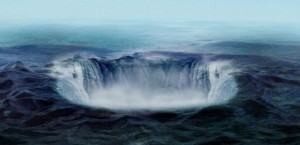Massage as therapy can be pretty basic. Therapists compress and glide along major muscle groups in the direction of the heart. The effort requires skill and practice. It reduces tension and boosts circulation of blood, taking some load off the heart.
That kind of therapy is refreshing and soothing. But what about the spots that make the tension return and impede circulation?
I have come to think of these areas as the Bermuda Triangles of the body. Stuff flies in, and it never flies out. Inside the stress of life is found: Too many hours at the computer, the unpleasant anger of a loved one, the contracted fear of an old injury.
For myself, and I suspect most therapists, the challenge in massage is to identify and release these zones so the person has a massage outcome that lasts and gradually heals the area. Easier said than done.
My most frequent triangle is at the posterior shoulder, roughly the area of the infraspinatus. This area tends to get skipped in general massage that focuses on major muscle such as trapezius.
In this area I often find near stone like contractions, loads of trigger points and for whatever reason, unresolved grief. Slow gentle work from Swedish to rolling to restore circulation leads to light and gradual TRP work and lymphatic drainage. When this area feels “normal” again – that is its temperature and texture feel like the rest of the body, headaches, chronic shoulder pains and even thoracic outlet symptoms fade.
My next Bermuda Triangle is the upper posterior shoulder/neck. Here lay a number of stuck structures: posterior scalenes, the oft-forgotten serrate posterior superior among them. What lies beneath? Treatment here often opens the diaphragm, perhaps by inhibiting reverse breathing.
For the stuck pelvis, along with referral hip and lumbar pain, I find the next triangle at the posterior-medial thigh. Here hamstrings often stick to neighboring adductors, pulling the legs inward and affecting balance. This area seems to be directly connected to unexplained pelvic pain in women. Hmmm.
My next fun zone is the medial calf. Here lies the only area of the soleus and posterior tibialis accessible to massaging hands. Here lies also a lot of leg stiffness, ankle dysfunction and lack of stability. Even simple effluerage help in this no-man’s land of the leg. With major lymphatic channels deep to the soleus, virtually on the posterior tibia, this is an action zone for swollen feet.
Some themes arise from the patterns. The lower body triangles are very protected and core supporting. The uppers are surprisingly accessible but daunting. It is very difficult to apply techniques there because of a combination of pain and sensitivity there. Some first massages are simply spent making the brain aware of these spots.
As ever I am curious how therapists deal with these areas and how they identify ”Bermuda Triangles” in their clients….

All comments seem to have disappeared into the Bermuda Triangle. I agree these are areas most often forgotten by massage therapists. I am still looking for someone here in the Modesto area that will actually massage the simple gluteal muscles. It is a shame.
Tough Stuff. Most therapists have no problem massaging gluteal muscles. It’s considered a must for relieving back pain….Sue